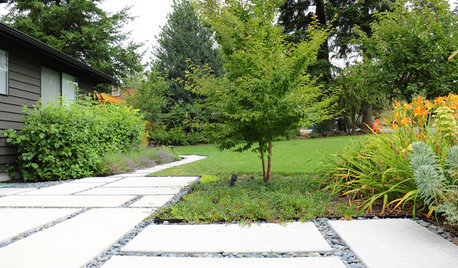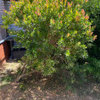Help with Hakea laurina!
Hello all -
I'm new to the forum, but have read many posts and explored several threads. I'm turning to this site for advice after scouring the web and emailing several nurseries without finding the help I need. Here's my situation:
I am trying to grow a Hakea laurina from seed.The seedling is rather young - I estimate it's a little less than 6 months old. Not long after I transplanted the seedling into a pot I noticed that the first set of leaves (i.e. cotyledons) started turning a reddish purple color around the outside edge of the leaves, starting at the tip. I understand that the veins of this particular species can be reddish, but I am referring to the flesh of the leaves. These leaves proceeded to turn all the same reddish-purple color and the leaves above them are going through a similar process. I assume this is abnormal behavior because 1) after one of the cotyledons turned completely red it fell off, 2) the absence/recession of green implies a lack of chlorophyll or damage to chlorophyll and 3) I did not encounter this same issue when I first attempted to grow this species (this is my second attempt).
I now have about 4 or 5 leaves that have this red tip and it seems to creep down the leaf slowly but surely. I am assuming this is some sort of nutrient deficiency but am not certain. To the best of my knowledge the plant is showing signs of phosphorous deficiency. This is contradictory to my research on Hakeas, or more generally Proteaceae, because this family of plants is known to develop proteoid roots (which are adapted particularly for plants with low-nutrient soils). Further, I have read that Hakeas and other Proteaceae are supposed to live in low-phosphorous soils, which implies they should not need to be fertilized with phosphorous and supposedly phosphorous fertilizers may kill the plant.
*Attached below is a picture of my seedling.
Has anyone ever encountered this issue? Do you have any suggestions for me to fix it and save the seedling (and help it flourish)?
Some brief explanation of living conditions:
This seedling was grown outside during the summer months(germinated early summer) when the temperature was sufficiently hot. Symptoms first started in late summer, prior to the plant being moved inside. Current conditions are as follows:
Growing medium contains volcanic rock, decomposed granite, pine bark pieces, and some peat moss.
-This was an attempt to increase drainage without adding sand. I realize sandy soil may be natural growing conditions for this plant, but I've read so many articles suggesting to avoid sand in potted plants that I figured to omit the sand.
Lighting consists of a T5 light fixture with High output 6400K bulbs for ~15 hrs a day (on mechanical timer).
I use a fan at varying times to circulate air around the plants.
Temperature: Not exactly sure but should be around 65-68 Fahrenheit (estimate, can get measurement if relevant).
Humidity: have not invested enough money...





funnelweb
CytokininOriginal Author
Related Discussions
HELP! Identify This Flower
Q
See pink flower on my Hakea laurina�Pin Cushion Hake
Q
WANTED: Seeking list of rare plants. ZONE 11a Brentwood, CA
Q
So. CA native, please help with name
Q
tropicbreezent
funnelweb
CytokininOriginal Author
tropicbreezent
funnelweb
CytokininOriginal Author
CytokininOriginal Author
funnelweb
CytokininOriginal Author
tropicbreezent
funnelweb